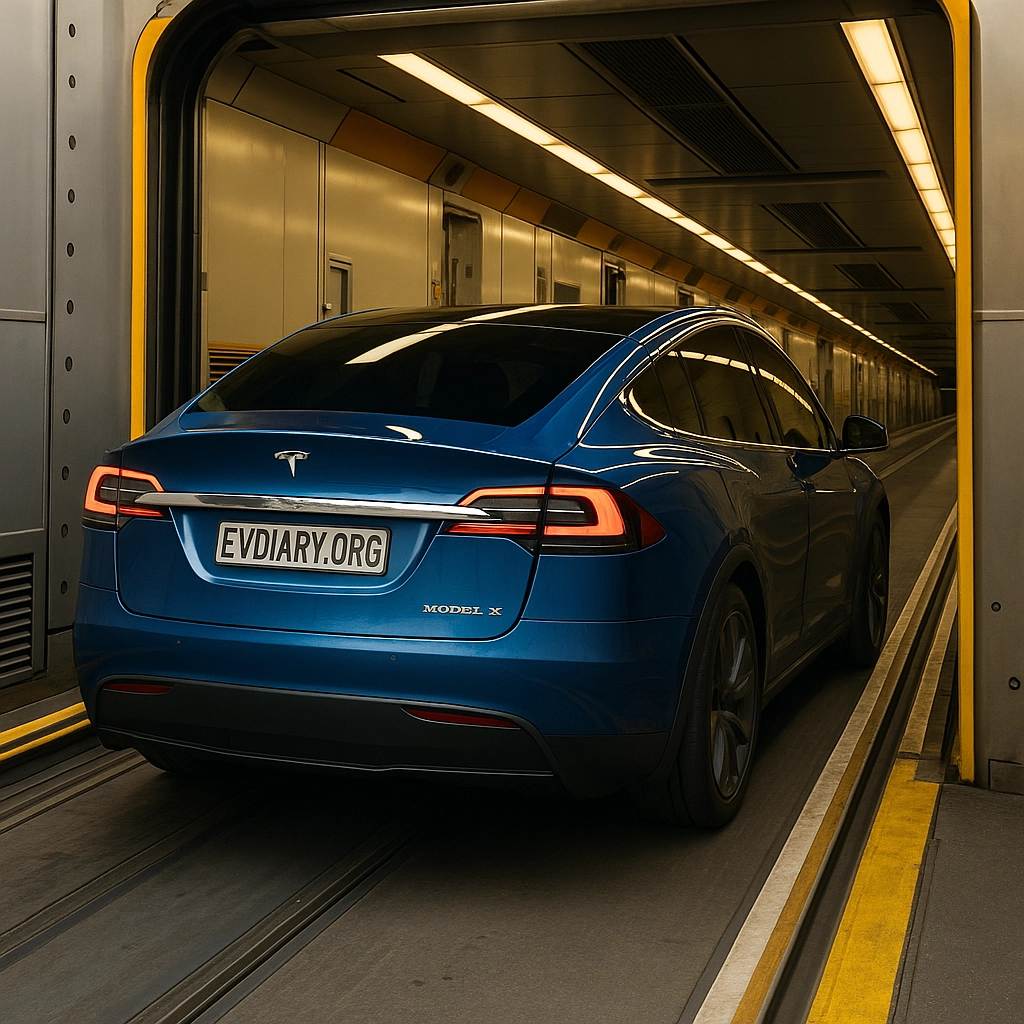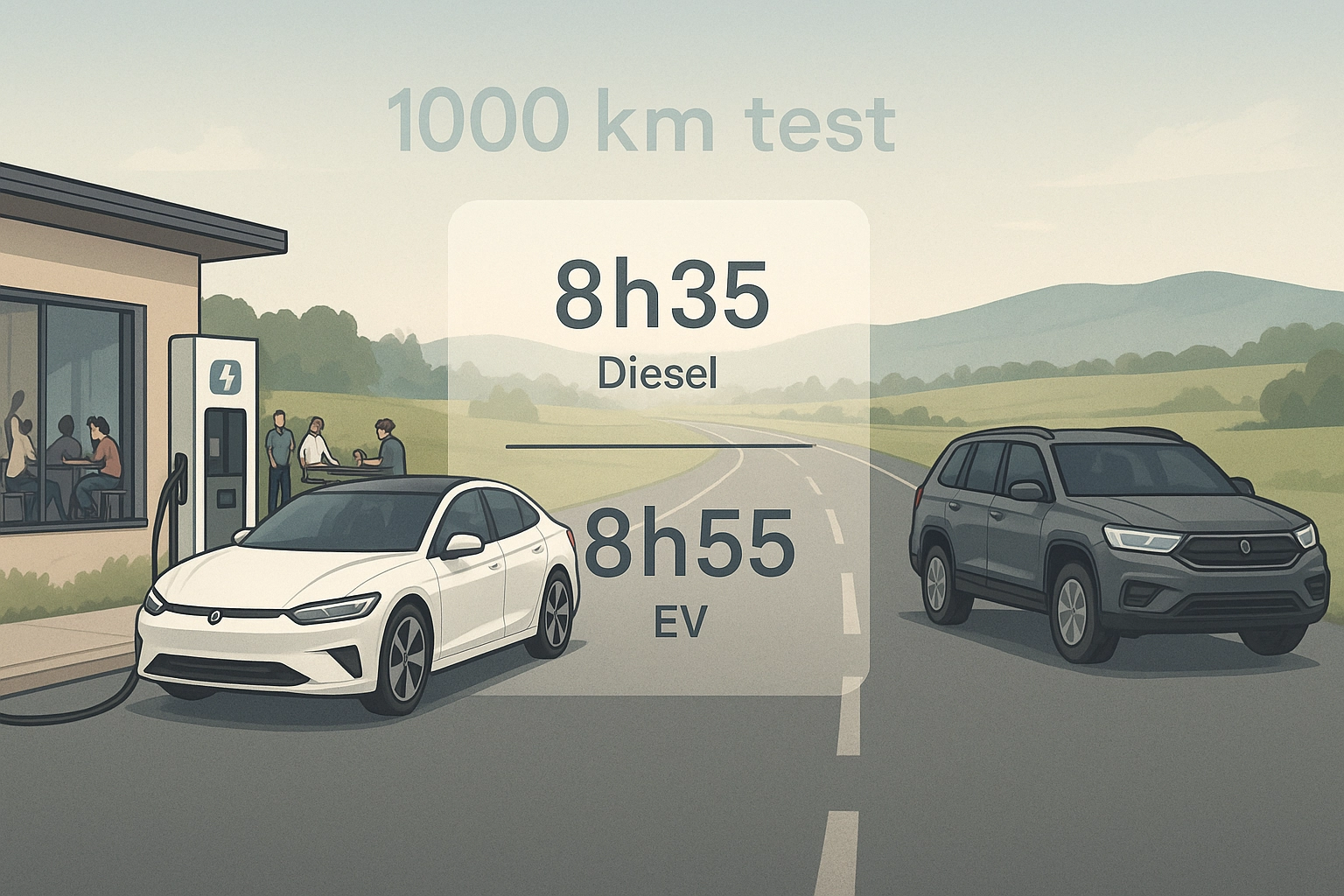✨ Introduction
In 2024, Eurotunnel's Le Shuttle service transported nearly 2.2 million passenger vehicles between the UK and France. Since opening in 1994, more than 102 million vehicles and nearly 500 million people have used the Channel Tunnel – a clear sign of its importance for travelers moving between the British Isles and mainland Europe.
We chose the Eurotunnel because we had never tried it before and wanted to see how it worked in practice. At the same time, we wanted to compare it to the Dover–Calais ferry, which we took on the return journey. The tunnel was our pick for the outbound leg to the UK, aiming for the fastest and most seamless experience.
The Eurotunnel lets you drive across the English Channel quickly and efficiently. Instead of boarding a ferry, you drive your car onto a Le Shuttle train that takes you through a 50.5 km rail tunnel, 38 km of which runs beneath the sea. Opened in 1994, the tunnel remains one of Europe’s most impressive engineering achievements — both in scale and in day-to-day operations.
🛂 Our Eurotunnel Experience
We booked our Eurotunnel ticket online. Check-in was quick thanks to automatic license plate recognition. We received a mirror-hanging tag and were guided straight to passport control and customs. British and French border checks are located in the same place, which really streamlines the process.
An attendant directed us to the correct lane, and after a short wait we drove toward the train. Since our car is slightly larger than average, we were assigned to a single-deck carriage. Smaller vehicles go into double-decker wagons. Boarding was efficient, and we parked bumper to bumper with the car in front. As EV drivers, we didn’t need to “turn off the engine” – we kept the air conditioning running and stayed comfortable the entire time.
We also noted that everything was clearly signposted and easy to follow. The staff were helpful, and the whole process felt smooth and well-practiced. From check-in to rolling onto the train, it was like a well-oiled machine.
🚆 What It's Like to Travel Through the Eurotunnel
We had heard in advance that the ride was so smooth you’d barely notice you were under the sea. Our experience matched that — with one small detail: you do feel like you’re on a train. It gently rocks, just enough to remind you you’re moving, but not enough to cause discomfort. Compared to a ferry, it’s much more stable — no waves, no delays from loading and unloading.
The atmosphere onboard was quiet and relaxed. We stayed in the car the entire time. Some carriages have toilets, but there’s not much else to do. Time passed quickly. We used the moment to check maps, plan the next leg of our drive, and take a break from the road — all without leaving the vehicle. In about 35 minutes, we rolled out onto the French motorway, without any repacking or waiting.
💡 Tips for Using the Eurotunnel
🕒 Arrive early: Be there at least 45–60 minutes before departure.
🛃 Have your documents ready: Passports and travel documents must be shown at the border. If you have tinted rear windows, it’s helpful to open them so customs officers can see everyone in the car.
⚡ Charge your EV in advance: Fast chargers are available on both sides of the Channel. We recommend topping up before boarding.
🍽️ Use the terminal facilities: There are toilets and food outlets at the terminals — there’s no service on the train itself.
👀 Stay alert: Watch for lane instructions and announcements on the departure screens — they’ll tell you when it’s time to drive onboard.
⚖️ Eurotunnel vs. Ferry – Price and Experience Compared
For us, the Eurotunnel was the most efficient option. We saved time and were back on the road almost immediately. But it came at a cost: the Eurotunnel ticket was €326, while the ferry crossing cost only €96.50. Our larger car might have affected the tunnel price. Ferry prices vary based on timing and provider, and we may have scored a good deal there.
The tunnel’s advantages are speed and frequency — the crossing takes just 35 minutes, with up to four departures per hour. It’s unaffected by weather, unlike ferries. You also don’t have to leave your car, which is handy in bad weather or if you’re traveling with kids or pets.
Ferries, on the other hand, offer a chance to get out, stretch your legs, and enjoy the sea views — something many people appreciate on holiday. You’ll also typically have access to shops and food while onboard.
If comfort and speed matter most, we’d pick the tunnel. If scenic views and a lower price are a priority, the ferry is a great alternative. It’s a trade-off — and thankfully, both options are good.
✅ Final Thoughts – Is the Eurotunnel Worth It?
The Eurotunnel is a fast, comfortable, and efficient way to cross the English Channel by car. We drove straight onto the train and just as easily off again in France — with no hassle.
I’d definitely do it again, but price is a factor. On holiday, we don’t mind taking a ferry — it adds to the experience. But if we find a good Eurotunnel discount or a fare close to the ferry’s, we’d happily ride the train again.
We recommend the Eurotunnel to anyone who wants a quick, practical, and unique way to travel between the UK and mainland Europe. It’s an experience in itself — and one of the most efficient travel solutions we’ve tested on our road trips through Europe.
Translations: Norsk
.png)




Comments